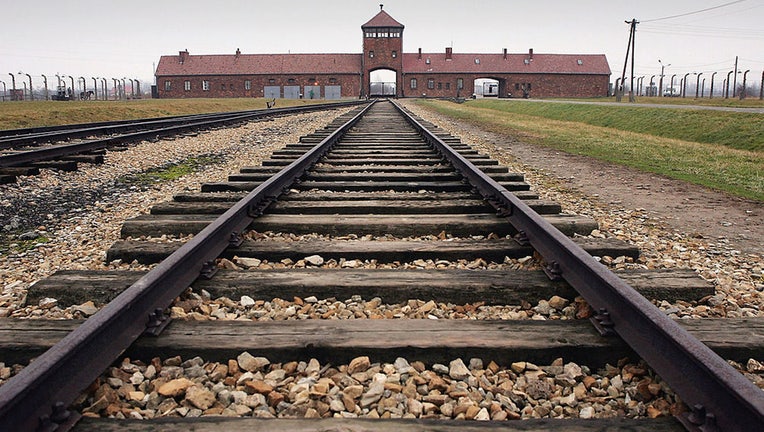‘Respect their memory’: Auschwitz museum reminds visitors not to take these types of photos

FILE - The railway tracks leading to the main gates at Auschwitz II - Birkenau seen December 10, 2004 the camp was built in March 1942 in the village of Brzezinka, Poland. (Scott Barbour/Getty Images)
The Auschwitz Memorial and Museum has once again asked for people not to pose for an Instagram-worthy photo on the train tracks leading to the concentration camp where over 1 million people were killed.
Another photo that was posted earlier this month on Twitter has once again prompted a reminder: "Respect their memory."
A woman who appeared to be visiting the Auschwitz Memorial and Museum on April 15 saw another visitor sitting on the train tracks leading to the camp, smiling and posing for a photo.
"Today I had one of the most harrowing experiences of my life. Regrettably it didn’t seem everyone there found it quite so poignant," the tweet read.
The photo was viewed over 30 million times and the comments were flooded with people who appeared to be incensed at the lack of awareness on the part of the woman and her photographer.
The same day the photo was shared on Twitter, the museum replied in the thread,
"Pictures can hold immense emotional & documentation value for visitors. Images help us remember. When coming to @AuschwitzMuseum visitors should bear in mind that they enter the authentic site of the former camp where over 1 million people were murdered. Respect their memory."
This is not the first time the museum has had to politely keep visitors in check.
Several photos were shared of people balancing on the train track beams leading to the concentration camp, the museum said,
"When you come to @AuschwitzMuseum remember you are at the site where over 1 million people were killed. Respect their memory. There are better places to learn how to walk on a balance beam than the site which symbolizes deportation of hundreds of thousands to their deaths."
A member of the Auschwitz Memorial and Museum press team told Vice World News that while most visitors treat the historical site with respect, there have been instances of inappropriate behavior.
"These are rather isolated incidents, but no matter how often it occurs, we believe we have an obligation to react," Pawel Sawicki told Vice.
"Last year, around 90% of our visitors were guided. The educators sensitize visitors to the character and symbolism of the place they are in. If we see inappropriate behavior, we react. This is our duty. Sometimes the reaction comes after the picture is already taken. It also happens that we react to the publication of various inappropriate pictures on the internet – by contacting the authors or by trying to raise awareness and discussion through public opinion," Sawicki added.
This story was reported from Los Angeles.

